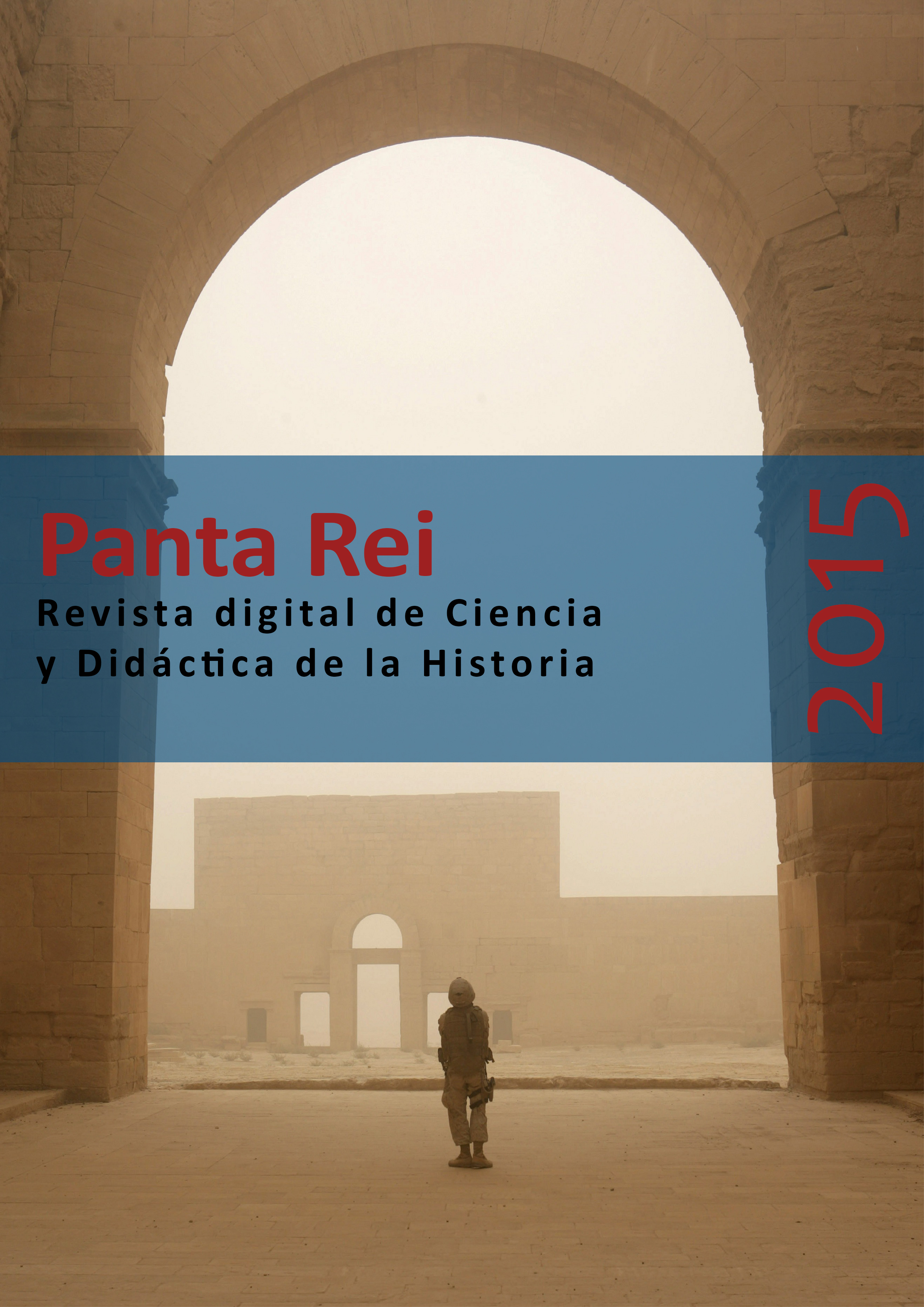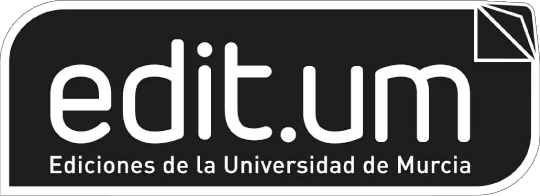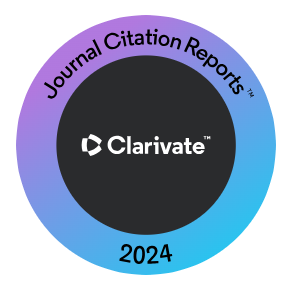El patrimonio arqueológico iraquí y su destrucción a lo largo del tiempo
Resumen
El moderno país de Iraq ocupa una zona en la que se asentaron las principales culturas del Antiguo Oriente. Un rico patrimonio arqueológico que durante años el país se encargó de estudiar. Su glorioso pasado era el orgullo de la nación. Cuando en el año 2003 se producía la invasión de Iraq, los medios de comunicación publicaron noticias sobre el saqueo del Museo Nacional, sin embargo este no era sino un hecho más, probablemente el más doloroso de los que ha sufrido el patrimonio de este país a lo largo del tiempo. En primer lugar el expolio de las potencias colonizadoras europeas, interesadas en aumentar los fondos de sus museos, pasando por la presencia de mafias internacionales sin escrúpulos, varias guerras desastrosas y un embargo internacional que se prolongó durante doce años, agravando la ya de por sí delicada situación del país, y que tuvo consecuencias importantes para el patrimonio arqueológico.
Descargas
-
Resumen708
-
PDF311
Citas
Al-Gailani Werr, L. (2008). The Story of the Iraq Museum. En Stone, P. G. y Farchakh Bajjaly, J. (eds.), The Destruction of Cultural Heritage in Iraq (pp. 26-30). Woodbridge: Boydell.
Alexander, C. (1928). Baghdad in Bygone Days: from the journals and correspondence of Claudius Rich, traveller, artist, linguist, antiquary, and British resident at Bagdad, 1808-1821. Londres: J. Murray.
Bailey, M. (2003). Seized: over 600 objects looted from Iraq. The Art Newspaper, September, 1-3.
Baker, H. D., Matthews, R. J. y Postgate, J. N. (1993). Lost Heritage. Antiquities Stolen from Iraq´s Regional Museums. Fascicle 2. Londres: British School of Archaeology in Iraq.
Bernhardsson, M. G. (2005). Reclaiming a plundered past. Archaeology and nation building in modern Iraq. Austin: University of Texas Press.
Botta, P. E. y Flandin, E. (1849-1850). Monument de Ninive. París: Gide et J. Baudry.
Brodie, N. (2008). The Market Background to the April 2003 plunder of the Iraq National Museum. En Stone, P. G. y Farchakh Bajjaly, J. (eds.), The Destruction of Cultural Heritage in Iraq (pp. 41-54). Woodbridge: Boydell.
Chuvin, P. (2007). Les Reinach et l´Empire ottoman. Comptes-rendus des séances de l´Académie des Inscriptions et Belles-Lettres, 151/2, 1091-1103.
Córdoba, J. M. (1997). Consecuencias de las sanciones sobre el patrimonio histórico-cultural de la Humanidad en Iraq. En Maestro, A. y Varea, C. (eds.), Guerra y sanciones a Irak: Naciones Unidas y el “nuevo orden mundial” (pp. 141-148). Madrid: Los Libros de la Catarata.
Córdoba, J. M. (2000). On the Iraq Museum and Other Assaults. Isimu, 3, 15-46.
Córdoba, J. M. (2001). Los pioneros de la arqueología en Oriente. Problemas y método en el redescubrimiento de asirios, babilonios y sumerios. En Córdoba, J. M., Jiménez, R. y Sevilla, C. (eds), El redescubrimiento de Oriente Próximo y Egipto. Viajes, hallazgos e investigaciones (pp. 59-80). Supplementa ad Isimu. II Series: Acta et Symposia, vol 1, Madrid: UAM publicaciones.
Córdoba, J. M. (2003a). La guerra y sus efectos sobre el patrimonio iraquí. Historia 16, 328, 1-27.
Córdoba, J. M. (2003b). Iraq, del esplendor arqueológico al expolio. La aventura de la historia, 57, 34-39.
Córdoba, J. M. (2004). Iraq: memoria y expolio. Robo y comercio ilegal de antigüedades 1991-2003. Nación Árabe, 51, 11-21.
Córdoba, J. M. (2005). Un caballero español en Isfahán. La embajada de don García de Silva y Figueroa al sha Abbás el Grande (1614-1624). Arbor, 180 (711-712), 645-669.
Danti, M. D., Ali, C. y Moaz, A. (2015). ASOR Cultural Heritage Initiatives (CHI): Planning for Safeguarding Heritage Sites in Syria and Iraq. Weekly Report, 24. Recuperado de Recuperado de www.asor-syrianheritage.org/weekly-reports/
Danti, M. D., Ali, C., Moaz, A., Paulette, T. y Franklin, K. (2015). ASOR Cultural Heritage Initiatives (CHI): Planning for Safeguarding Heritage Sites in Syria and Iraq. Weekly Report, 26-27. Recuperado de Recuperado de www.asor-syrianheritage.org/weekly-reports/
Danti, M. D., Ali, C., Paulette, T., Franklin, K., Cuneo, A., Barnes Gordon, L. A., y Elitzer, D. (2015). ASOR Cultural Heritage Initiatives (CHI): Planning for Safeguarding Heritage Sites in Syria and Iraq. Weekly Report, 39. Recuperado de Recuperado de www.asor-syrianheritage.org/ weekly-reports/
Danti, M. D., Ali, C., Paulette, T., Franklin, K., Cuneo, A., y Elitzer, D. (2015). ASOR Cultural Heritage Initiatives (CHI): Planning for Safeguarding Heritage Sites in Syria and Iraq. Weekly Report, 32. Recuperado de www.asor-syrianheritage.org/weekly-reports/
Danti, M. D., Branting, S., Paulette, T. y Cuneo, A. (2015). Report on the Destruction of the Northwest Palace at Nimrud. Nimrud Report. Recuperado de www.asor-syrianheritage.org/report-on-thedestruction- of-the-northwest-palace-at-nimrud/
Danti, M. D., Casana, J., Paulette, T., Franklin, K. y Ali, C. (2015). ASOR Cultural Heritage Initiatives (CHI): Planning for Safeguarding Heritage Sites in Syria and Iraq. Weekly Report, 25.
Danti, M. D., Trevithick, M., Ali, C., Paulette, T., Cuneo, A., Franklin, K. y Elitzer, D. (2015). ASOR Cultural Heritage Initiatives (CHI): Planning for Safeguarding Heritage Sites in Syria and Iraq. Weekly Report, 33. Recuperado de Recuperado de www.asor-syrianheritage.org/weeklyreports/
Danti, M. D., Zettler, R., Ali, C., Moaz, A., Paulette, T., Franklin, K., Cuneo, A. y Elitzer, D. (2015). ASOR Cultural Heritage Initiatives (CHI): Planning for Safeguarding Heritage Sites in Syria and Iraq. Weekly Report, 31. Recuperado de Recuperado de www.asor-syrianheritage.org/ weekly-reports/
Danti, M. D., Zettler, R., Ali, C., Paulette, T., Moaz, A., Cuneo, A., Elitzer, D. y Breegi, D. (2015). ASOR Cultural Heritage Initiatives (CHI): Planning for Safeguarding Heritage Sites in Syria and Iraq. Weekly Report, 30. Recuperado de www.asor-syrianheritage.org/weekly-reports/
Del Cerro Linares, C. (1999). La figura y obra de Robert Koldewey. Cuadernos del seminario Walter Andrae, 1, 3-14.
Del Cerro Linares, C. (2011). El patrimonio arqueológico iraquí y su destrucción desde la Guerra del Golfo hasta nuestros días. Isimu, 14-15, 81-101.
Emberling, G. (2008). Archaeologists and the Military in Iraq, 2003-2008: Compromise or Contribution? Archaeologies: Journal of the World Archaeological Congress, 4/3, 445-459.
Fagan, B. M. (2007). Return to Babylon. Travelers, Archaeologists, and Monuments in Mesopotamia. Boulder: The University Press of Colorado.
Fales, F. M. (2006). Saccheggio in Mesopotamia. Il museo di Bagdag dalla nascita dell’Iraq ad oggi. Udine: Forum Editrice Universitaria, Udinese.
Foster, B. R., Foster, K. P. y Gerstenblith, P. (2005). Iraq Beyond the Headlines. History, Archaeology and War. Singapur: World Scientific.
Fuji, H. y Oguchi, K. (1996). Lost Heritage. Antiquities Stolen from Iraq´s Regional Museums. Fascicle 3. Tokyo: Institute for Cultural Studies of Ancient Iraq, Kokushikan University.
García Encina, C. y Sorroza Blanco, A. (2003). Naciones Unidas: las obligaciones de Iraq. En Bardají, R. L. (ed.), Irak: Reflexiones sobre una guerra (pp. 97-113). Madrid: Real Instituto Elcano de Estudios Internacionales y Estratégicos.
George, D. (2008a). The Looting of the Iraq National Museum. CAA News, 33/3, 8-13.
George, D. (2008b). The Looting of the Iraq National Museum. En Stone, P. G. y Farchakh Bajjaly, J. (eds.), The Destruction of Cultural Heritage in Iraq (pp. 97-108). Woodbridge: Boydell.
George, D. y Gibson, McG. (2008) The looting of the Iraq Museum complex. En Emberling, G. y Hanson, K. (eds.), Catastrophe! The looting and destruction of Iraq’s past (19-27). Chicago: The Oriental Institute of the University of Chicago.
Gibson, McG. (1997). The loss of archaeological context and the illegal trade in Mesopotamian antiquities. Culture Without context, 1, 6-8.
Gibson, McG. (2008a). The looting of the Iraq Museum in context. En Emberling, G: y Hanson, K. (eds.), Catastrophe! The looting and destruction of Iraq´s past (pp. 13-18). Chicago: The Oriental Institute of the University of Chicago.
Gibson, McG. (2008b). The Acquisition of Antiquities in Iraq, 19th century to 2003, Legal and Illegal. En Stone, P. G. y Farchakh Bajjaly, J. (eds.), The Destruction of Cultural Heritage in Iraq (pp. 31-40). Woodbridge: Boydell.
Gibson, McG. y McMahon, A. (1992). Lost Heritage. Antiquities Stolen from Iraq´s Regional Museums. Fascicle 1. Chicago: American Association for Research in Baghdad.
Gran-Aymerich, E. (1998). Naissance de l´archéologie moderne, 1798-1945. París: CNRS Éditions.
Hamdani, A. (2008). The Damage Sustained to the Ancient City of Ur. En Stone, P. G. y Farchakh Bajjaly, J. (eds.), The Destruction of Cultural Heritage in Iraq (pp. 151-155). Woodbridge: Boydell.
Huot, J. L. (2008). The Importance of Iraq’s Cultural Heritage. En Stone, P. G. y Farchakh Bajjaly, J. (eds.), The Destruction of Cultural Heritage in Iraq (pp. 19-24). Woodbridge: Boydell.
Invernizzi, A. (2005). Il genio vagante. Babilonia, Ctesifonte, Persepoli in raconti di viaggio e testimonianze dei secoli XII-XVIII. Alessandria: Edizioni dell´Orso.
Jasim, S. A. (1985). The Ubaid Period in Iraq. Recent excavations in the Hamrim region. Oxford: BAR International Series.
Lafont, B. (2008). The ongoing work of the French Archaeological Institutes in the Middle East for Iraq. En Emberling, G. y Hanson, K. (eds.), Catastrophe! The looting and destruction of Iraq´s past (pp. 221-228). Chicago: The Oriental Institute of the University of Chicago.
Larsen, M. T. (1996). The Conquest of Assyria. Excavations in an Antique Land. Londres: Routledge.
Layard, A. H. (1849). Nineveh and its Remains. Londres: John Murray.
Layard, A. H. (1849-1953). The Monuments of Nineveh, 2 vols. Londres: John Murray.
Lloyd, S. (1980). Foundations in the Dust. The Story of Mesopotamian Exploration. Londres: Thames and Hudson.
Low, Ü. (2003). Die Plunderung der kulturellen Einrichtungen in Irak unter besonder Berücksichtigung des Nationalmuseums in Bagdag. MDOG, 153, 13-56.
Maestro, A. y Varea, C. (eds.) (1997). Guerra y sanciones a Irak: Naciones Unidas y el “nuevo orden mundial”. Madrid: Los Libros de la Catarata.
Metzger, H. (1988). La correspondance passive d´Osman Hamdi Bey. Comptes-rendus des séances de l´Académie des Inscriptions et Belles-Lettres, 132/4, 672-684.
Moussa, M. (2008). The damages sustained to the ancient city of Babel as a consequence of the military presence of Colition forces in 2003. En Stone, P. G. y Farchakh Bajjaly, J. (eds.), The Destruction of Cultural Heritage in Iraq (pp. 143-150). Woodbridge: Boydell.
Parapetti, R. (2008). The contribution of the Centro Scavi di Torino to the reconstruction to the Iraqi Antiquities. En Emberling, G. y Hanson, K. (eds.), Catastrophe! The looting and destruction of Iraq´s past (pp. 229-234). Chicago: The Oriental Institute of the University of Chicago.
Pottier, E. (1910). Éloge funèbre de S. E. Hamdy Bey, directeur des Musées impériaux de Constantinple et correspondant étranger de l´Académie. Comptes-rendus des séances de l´Académie des Inscription et Belles-Lettres, 52/2, 71-75.
Reichel, C. (2008). Cataloging the Losses. En Emberling, G. y Hanson, K. Catastrophe! The looting and destruction of Iraq´s past (pp. 51-63). Chicago: The Oriental Institute of the University of Chicago.
Rothfield, L. (2008). Antiquities under Siege: Cultural Heritage Protection after the Iraq War. Lanham: Altamira.
Russell, J. M. (1998). The Final sack of Nineveh. New-Haven-Londres: Yale University Press.
Russell, J. M. (2008), Efforts to Protect Archaeological Sites and Monuments in Iraq, 2003-2004. En Emberling, G. y Hanson, K. (eds.), Catastrophe! The looting and destruction of Iraq´s past (pp. 29-43). Chicago: The Oriental Institute of the University of Chicago.
Saleh Alkhalifa, W. (2003a). Irak y el arte de escribir. La memoria destruida. Historia 16, 328, 28-41.
Saleh Alkhalifa, W. (2003b) ¿Choque de civilizaciones o choque de intereses? En Hijazi, A. (ed.), Irak: un mar de mentiras (pp. 163-180). Madrid: Olivium.
Zottin, U. (2008). Italian Carabineers and the protection of Iraqi cultural heritage. En Emberling, G. y Hanson, K. (eds.), Catastrophe! The looting and destruction of Iraq´s past (pp. 235-240). Chicago: The Oriental Institute of the University of Chicago.
Derechos de autor 2015 Fernando Espejel Arroyo

Esta obra está bajo una licencia internacional Creative Commons Atribución-CompartirIgual 4.0.
Todos los contenidos publicados en nuestra revista están sujetos a una licencia Atribución 4.0 Internacional (CC BY-SA 4.0) de Creative Commons. Usted es libre de compartir (copiar y redistribuir el material en cualquier medio o formato) y adaptar (remezclar, transformar y crear a partir del material para cualquier finalidad, incluso comercial), bajo los siguientes términos:
Reconocimiento: Debe reconocer adecuadamente la autoría, proporcionar un enlace a la licencia e indicar si se han realizado cambios. Puede hacerlo de cualquier manera razonable, pero no de una manera que sugiera que tiene el apoyo del licenciador o lo recibe por el uso que hace.
CompartirIgual: Si remezcla, transforma o crea a partir del material, deberá difundir sus contribuciones bajo la misma licencia que el original.
El texto completo de la licencia se puede consultar en: Licencia Creative Commons













